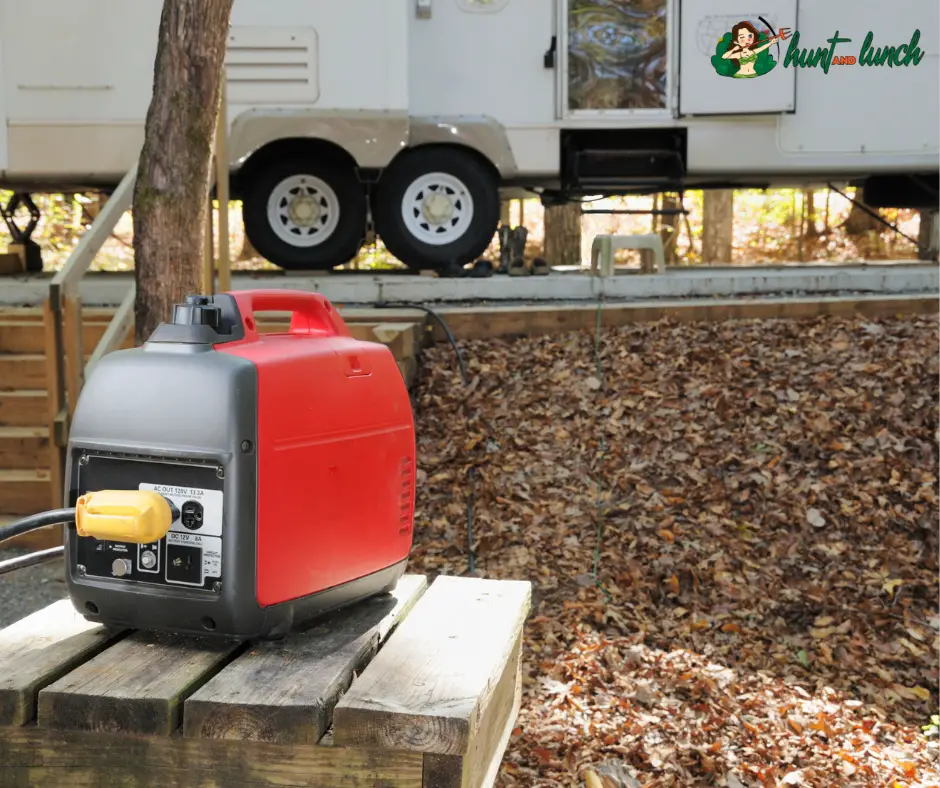
Portable generators are a great way to supply power when the power grid goes down. And since they are used sparingly, do I need to ground my portable generator?
Yes, you are required to ground your portable generator before each use. Grounding is required by law and can help protect you and your electrical equipment from damage. If you don’t ground your portable generator, you may be putting yourself and others at risk of electrocution or damage to your electrical equipment.
What Is Electrical Grounding?
Electrical grounding connects a circuit, device, or system to the earth or ground. The purpose of grounding is to protect from electric shock by providing a low resistance path for electrical current to follow.
For an electrical circuit to be properly grounded, there must be at least one wire connected directly to the earth (ground). This connection can be made through physical contact with an object buried in the soil or an underground metal rod called an electrode.
What You Need to Ground Your Portable Generator
Grounding your portable generator is easy and can be done quickly. What you need is often readily available around you and doesn’t require any technical skill. Here is a list of what you will need to ground your portable generator as well as the grounding process:
Copper grounding rod
This is an integral part of the grounding process. A copper grounding rod is a must, and it should be driven into good soil at least eight feet long. It serves as a conduit for electrical charges to safely travel from your generating set into the ground. For most portable generators, you’ll need a copper rod at least eight feet in length. However, a longer rod can make driving it deeper into the ground easier.
Copper grounding wire
You can use copper grounding wire to ground your generator. This is a common type of wire used in electrical systems. It is easy to install and inexpensive, making it the perfect choice for those on a budget. Copper grounding wire has many benefits, including the following:
- It is flexible and can be used in a variety of situations.
- The amount of wire you need will depend on the distance between your generator and your buried rod.
- Be sure to give yourself some extra wire since this can make driving the rod into the ground easier.
Wire Strippers, hammer, pliers, and wrench
For this project, you’ll need a wire stripper and a pair of pliers. A wrench will also be handy if you connect the generator to an existing outlet or power line. Still, it is not necessary for simple grounding. Wire strippers help you peel off insulations on your copper wire, and pliers can help you resize your copper wire to the adequate length you need. Also, a hammer can help you drive your rod into the ground much faster.
How to Ground Your Portable Generator
Hammer in the copper grounding rod
Once all your equipment is set, you begin by hammering the grounding rod. The copper grounding rod should be at least 8 feet long but no more than 10 feet long. This depth ensures that any electrical discharge from the grounding rod won’t electrocute people standing on the surface.
If your terrain is difficult for hammering straight down, you can angle your rod at up to 45o to avoid obstructions.
Connect a copper wire to the grounding rod
Once you have hammered your copper rod into the ground sufficiently, it’s time to connect your copper wire to the topmost part of the rod. Use your wire strippers to de-insulate the copper wire and wound it sufficiently around the exposed end of your copper rod.
Ensure to attach the copper wire to the grounding rod and secure it with some pliers; check that your ground is secure. You should not be able to pull it off the rod or see any exposed metal anywhere on the earth.
Connect the generator to the grounding rod
After connecting your copper wire to your grounded rod, use the other end of the copper wire to connect it directly to the generator. To do this, ensure the generating set is not operational. Connect the grounding wire from your generator’s frame to its neutral wire or grounding screw.
This is often depicted by a specific color, which varies depending on where you live. However, it’s always labeled for easy identification. Finish the process by screwing it in place after wounding around the grounding screw.
What happens if you don’t Ground a Generator?
If you don’t ground your generator, it can put yourself and others at risk. Here are some situations that can arise from not grounding your portable generator before using it:
Risk of electrocution
The risk of electrocution is genuine if you don’t ground your generator. This is especially important if you’re using it in a wet environment, like on the side of a river or ocean. In these situations, it’s vital to ensure that there is no chance for water to get inside the equipment and cause damage.
Without grounding, any static electricity buildup within the machine will remain there until it builds up to a dangerous amount and then leaks into the air around you. This can cause damage to your electrical equipment and even harm people nearby who come into contact with it. Without a proper ground, the electrical current will travel through your body and cause severe injury or death.
Risk of damaging your electrical equipment
If a portable generator is not grounded, there is an increased chance that this device can cause damage to any electrical equipment connected to it. This can include appliances like computers and televisions and electronic devices such as stereos and security systems. The lack of proper grounding in these situations increases the chances for short circuits because more significant amounts of heat are generated when electricity travels through ungrounded wires instead of dissipating properly-grounded wires.
Damage to your generating set itself
A ground wire ensures that the chassis of your generator is at earth’s potential. This prevents electric shock and damage to your generating set itself. Still, it also helps protect you against electrocution, which may happen if you accidentally touch metal parts while they’re still energized. Electrocution can also occur when you feel metal parts after they’ve been energized, so grounding your generator keeps it safe throughout all phases of its operation.
In addition, grounding also helps protect your generator from damage by lightning strikes or surge currents caused by nearby lightning strikes or surges on power lines. Grounding ensures that any lightning strike will pass harmlessly through the ground wire instead of damaging your set.
Conclusion
You are now ready to start using your portable generator. Remember that you should use this device only as a last resort when the power goes out or if you need to power up a few essential appliances during an emergency.

I’m Cindy, a free-spirited outdoor enthusiast. Since childhood, Our family frequently goes on weekend camps and my father, who was a skilled hunter, used to teach my siblings and me valuable things about wildlife survival. I made this blog to share my knowledge, experiences, and tips.






